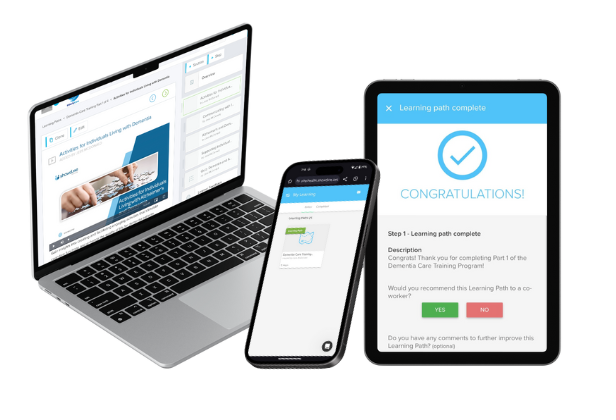Stepping Towards Safety: Practical Strategies Healthcare Workers Can Implement To Prevent Falls In Seniors
Post - Stepping Towards Safety: Practical Strategies Healthcare Workers Can Implement To Prevent Falls In Seniors
Today’s seniors are more determined than ever to maintain their independence. However, determination isn’t always enough. According to the Centers for Disease Control and Prevention (CDC), one in four Americans aged 65 and older falls each year, and more than 800,000 people are hospitalized each year due to a fall injury.
Falls can have a major impact on a senior’s quality of life. In fact, the National Council on Aging states that the fear of falling can lead to limitations in activities, social isolation, and decreased quality of life among older adults. Because of this, as a healthcare worker, your role in preventing falls is critical.
Common Causes Of Falls In Seniors
Falls can happen for many reasons including environmental factors such as slippery floors, poor lighting or cluttered walkways; medical conditions such as muscle weakness, balance issues, or medications; and human factors such as inadequate footwear or impaired hearing or vision.
And while the causes of falls range dramatically, they are typically categorized as one of the following:
-
-
- Accidental Falls: Caused by slips, trips or missteps
- Unanticipated Physiological Falls: Caused by an underlying medical condition or sudden change in health
- Anticipated Physiological Falls: Caused by known medical conditions such as seizures or fainting spells
-
Course Preview: Fall Prevention For Healthcare Workers
More information on fall prevention is available in our online course, Fall Prevention For Healthcare Workers. Press play to see a quick preview.
Want to deliver these essential strategies to your employees? Click below to learn more about our fully-managed compliance training services.
Identifying Potential Fall Risks
One of the most important things healthcare workers can do to prevent falls is to conduct a comprehensive fall risk assessment so that the appropriate preventative measures can be implemented.
Assessing Falls In A Home Setting
Caregivers in home health, home care, and senior care play a vital role in monitoring for changes in both the physical and mental health of those they serve. Common symptoms that could be a sign of a more serious problem include:
-
-
-
- Checking for loose rugs, wet surfaces, and other hazards;
- Ensuring proper lighting;
- Identifying opportunities to install grab bars and handrails;
- Examining bedrooms, bathrooms, and common areas; and,
- Ensuring clear pathways and removing obstacles.
-
-
Assessing Falls In A Facility Setting
In a healthcare facility such as a long-term care or assisted living community, you should check to make sure that the space is free from potential fall risks, including:
-
-
-
- Checking that beds and chairs are positioned at the proper height;
- Ensuring that the call light is unobstructed and easily accessible;
- Checking that wheelchairs, walkers, and cains are accessible and in good working order;
- Identifying hazards in shared spaces, such as overcrowding in communal areas; and,
- Examining outdoor spaces for uneven walkways, slippery leaves, or other outdoor hazards.
-
-
It’s also important to consider physical and mental factors such as mobility, gait and use of assistive devices; hearing and vision loss; and cognitive status and awareness.
Certain medications, including sedatives, antidepressants, antipsychotics and hypnotics and increase the risk of falls. Risk is further increased in seniors taking multiple medications. Because of this, it’s important to be vigilant in monitoring and reporting any changes that you see when it comes to mobility, cognition, or medication management.
Strategies For Preventing Falls
There are many strategies healthcare workers and their organizations can implement to prevent falls, including:
-
-
- Environmental modifications, such as installing handrails and grab bars, identifying and removing fall risks, and ensuring proper lighting;
- Facility safety protocols, including staff training, frequent safety inspections, and the use of fall mats or alarms when appropriate; and
- Client and resident education, so that they and their family members are empowered to practice safe habits independently.
-
Proper training of healthcare employees plays an essential role in the prevention of falls to ensure seniors can lead happier, healthier, and more independent lives. Showdme offers ongoing training for healthcare workers including home health, home care, skilled nursing, and assisted living to ensure your employees are equipped with the knowledge they need to ensure the safety and care of those they serve, and ultimately, drive better care outcomes.
Best of all, we manage the entire training process for you, from learning path creation, enrollment, multilingual end-user support, proactive notifications, and more. Click here to learn more about showdme’s compliance training services and software.

Let Us Show You More
See how showdme's unique service-first approach to training helps hundreds of healthcare organizations ensure compliance. Request a demo today!

